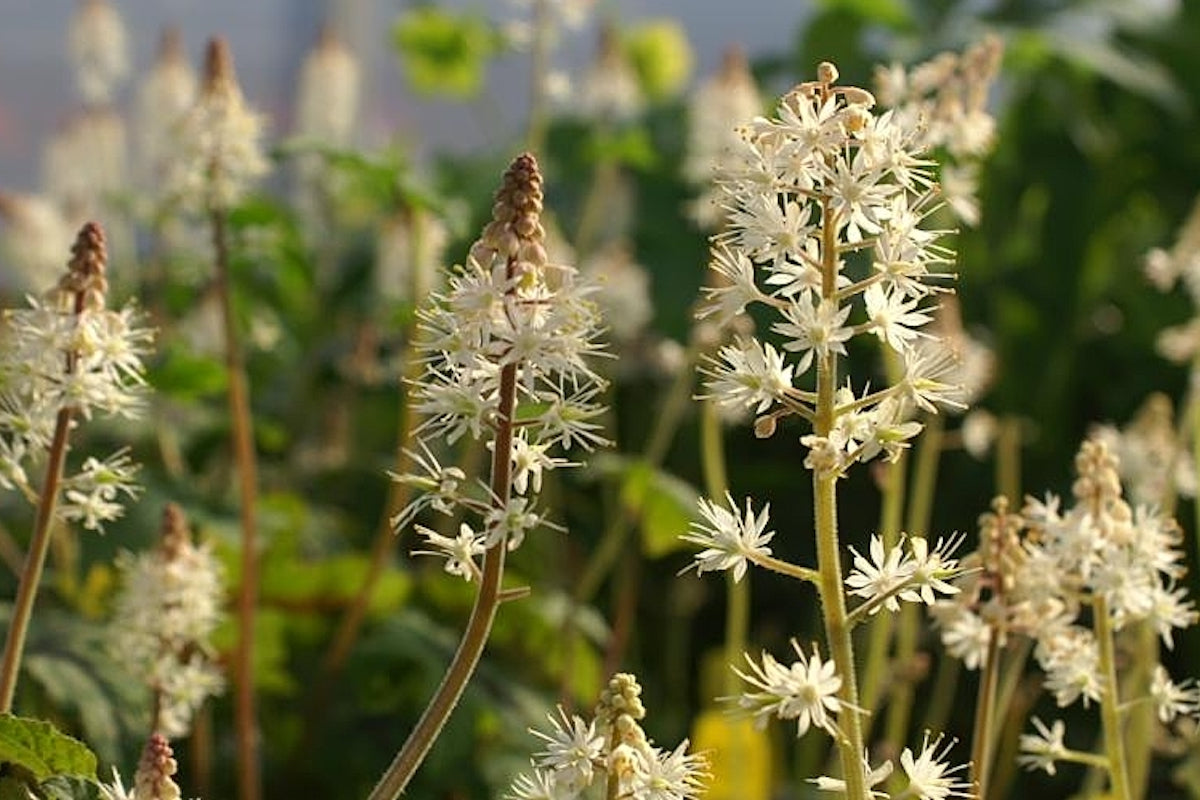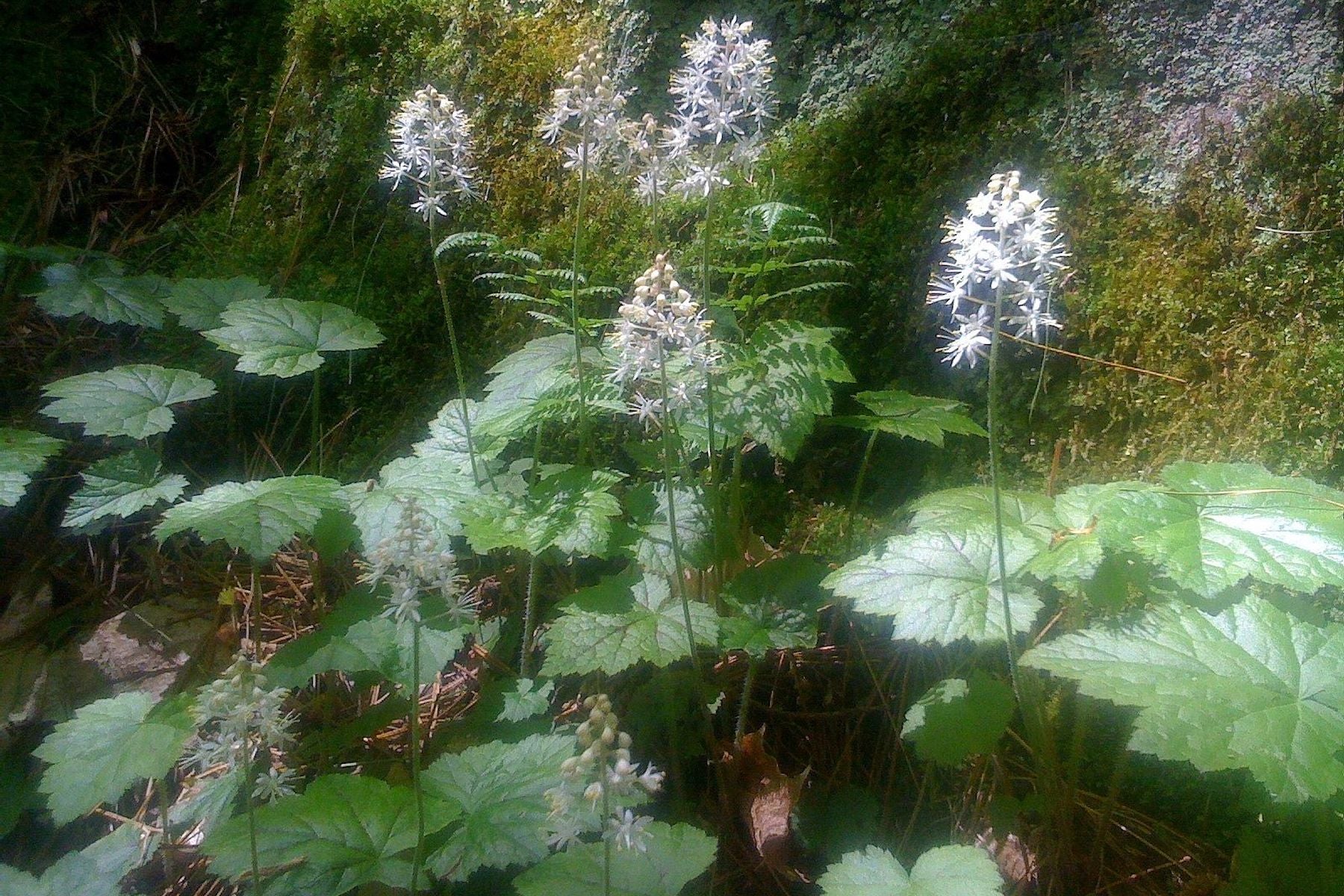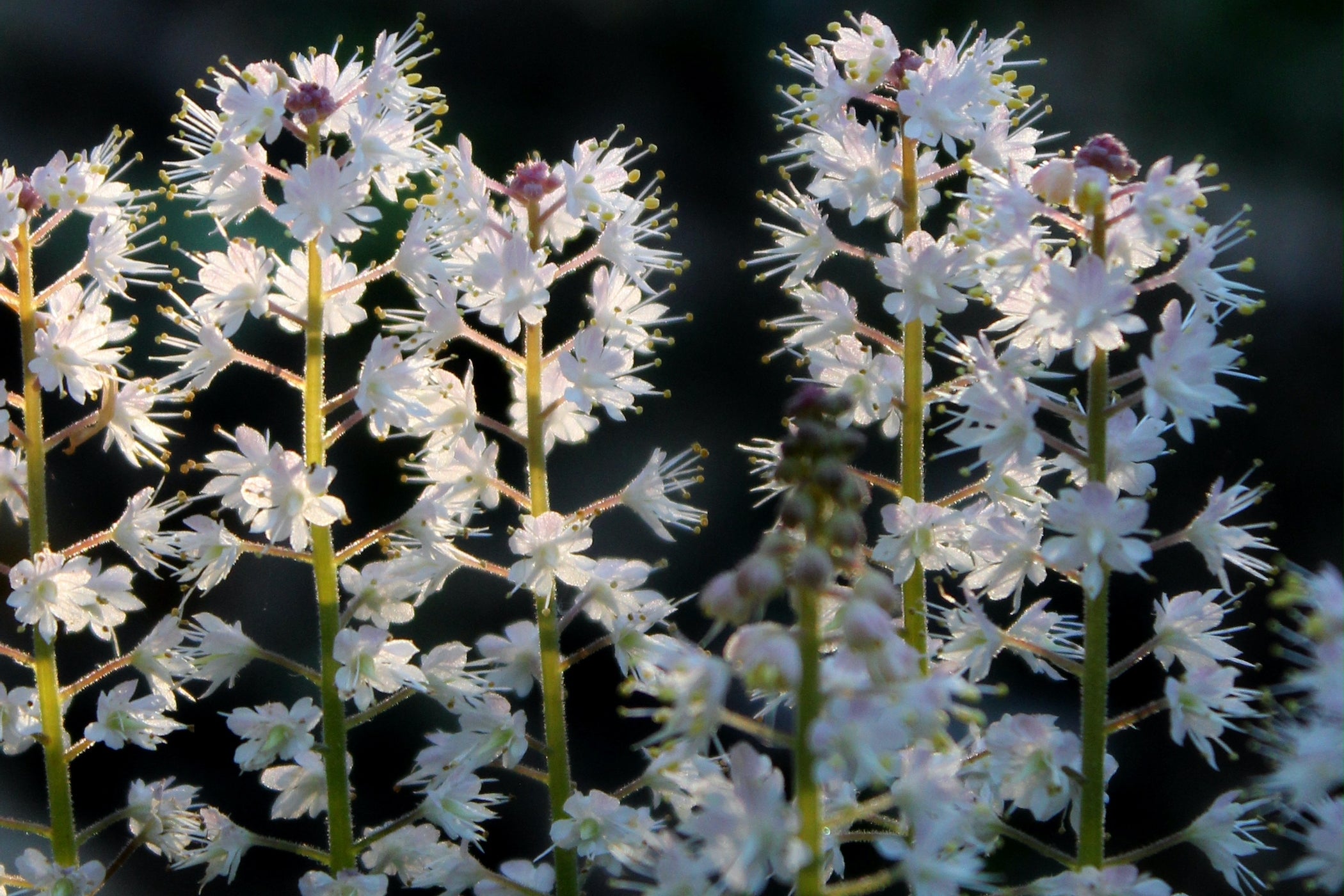Tiarella cordifolia
Approx. 0.5 litre pot
About this cultivar:
Tiarella cordifolia is clump-forming perennial which spreads by runners (stolons) to form dense wide clumps of foliage. Semi-glossy, heart-shaped (cordifolia means heart-shaped leaf) leaves rise directly from the stolons. Leaves may have reddish variegation along the veins. Foliage is evergreen in mild winters, often turning reddish bronze in autumn and winter. Tiny, pinkish flower buds become white flowers with very long stamens appearing in airy racemes.
That description is a bit dry, but this is a bit of a garden classic. You will see it everywhere!
Has the Royal Horticultural Society Award of Garden Merit (RHS AGM)
- Position: Full sun, partial shade
- Soil: Almost any soil
- Flowers: June, July, August
- Other features: Royal Horticultural Society Award of Garden Merit (RHS AGM), Interesting Foliage or Fruit, Suitable for Container
- Hardiness: H5 - Hardy in most places throughout the UK even in severe winters (-15 to -10°C), Fully hardy
- Habit: Clump forming
- Foliage: Semi evergreen
- Height: 15 - 45 cm (0.75 - 1.5 ft)
- Spread: 30 - 60 cm (1 - 2 ft)
- Time to full growth: 2 to 5 years
- Plant type: Herbaceous Perennial
- Colour: White, green
- Goes well with: -
About this genus:
Tiarella is a genus of wildflower and garden herbaceous perennial plants found in Asia and North America. They belong to the saxifrage family (Saxifragaceae). Sometimes called foamflower, because their masses of tiny, spidery flowers atop short stalks collectively look like foam. The Genus name comes from the Greek tiara meaning a crown and ella meaning small, in reference to the form of the fruit.
TLDR; Basically, they are like Heuchera, but do better in shade.
Tiarella grows a clump of leaves from a central crown held at or just below the soil surface. Each node on the crown contains a bud that will eventually form a new leaf, an inflorescence, or a stolon that gives rise to an offset. In some species their stolons can be quite long and spready (technical terms). This helps them form foam flower carpets in shady areas, where they tend to thrive (tho they are fine in sun). They can also spread by rhizomes, and some species have an invasive reputation, but, RELAX, we don’t sell those. So, they can be clumpers or wide spreaders.
Tiarella leaves may be shallow or deeply cut like a Japanese maple, generally semi-evergreen but often turn a reddish bronze in the winter. The leaf colour is often an important ornamental feature of Tiarella. In summer a stalk arises from the crown and produces many small bell-shaped or spidery florets on a single floral structure. These flowers can be greenish-white, white, pink, and coral.
What does that mean for the garden? With their airy flower stems I think they look great in drifts, but don’t let that limit you. Try in shady areas or possibly use as a medium height ground cover. Don’t be limited by shady areas though as they will tolerate a wide range of light levels. Likewise they grow in most soils that aren't too extreme.










